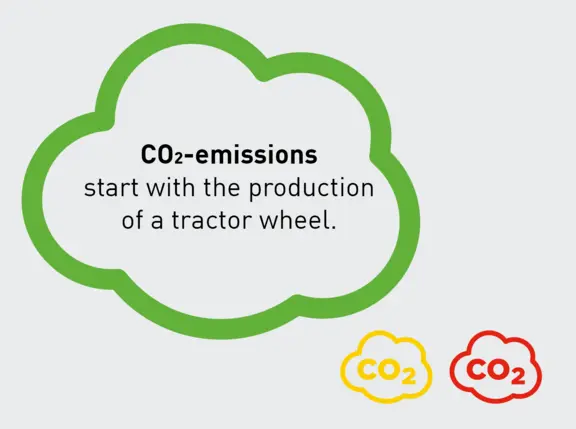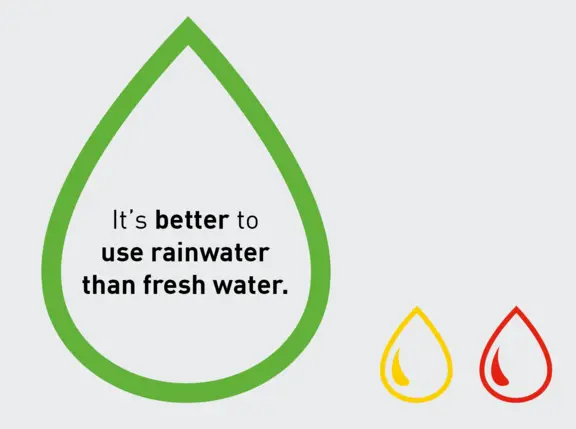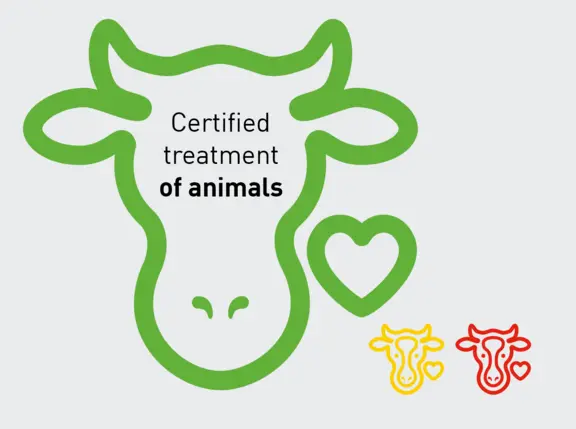
Putting sustainability scores on the menu
What we consume on a daily basis has an impact on our environment. Food production accounts for around one third of greenhouse gas emissions worldwide.
We demonstrate how delicious dishes made with seasonal ingredients can help reduce emissions and how much CO2 ends up on your plate. In collaboration with Eaternity, we are committed to delivering delicious, climate-friendly cuisine.

The five environmental scores
We measure our sustainability on the basis of five scores: carbon footprint, water consumption, Vita Score, animal welfare and rainforest destruction. The traffic light system signals the impact of a dish on each score.
But what do the scores actually represent? How are they calculated and what do they mean? Below, we explain the background to the scores.

Carbon footprint
The carbon footprint of a foodstuff is measured by a life cycle analysis (LCA). This is a systematic and quantitative assessment of the environmental impacts in each phase of the product’s life cycle.
It considers aspects such as production, handling, transport, storage and disposal. More than 60% of all emissions in connection with food production and consumption come from meat and dairy products.


Water consumption
The world has sufficient water resources but they are not distributed equitably. A product’s water scarcity footprint depends on two aspects: first, the volume of fresh water (surface and groundwater, excluding rainwater and water pollution) used for the product in the respective production region; second, the relative water scarcity in the respective region.
For example, a tomato grown in Spain needs 44 times more water for irrigation than a tomato grown in Switzerland. Food production (agriculture) is currently responsible for 70% of our total freshwater consumption – mainly for irrigation. To help everyone, we need to reduce global dependency on our scarce water resources by 50%.


Vita Score
What we eat can have an enormous impact on our health and well-being. The Vita Score supports the goal of staying healthy by fostering a diet that minimises the risk of diet-related conditions such as cardiovascular disease, diabetes and cancer. The Global Burden of Disease (GBD) study is an independently funded collaboration involving more than 2,300 scientists. It has identified 84 behavioural, environmental, occupational and metabolic risks or risk clusters that can cause illness. The Vita Score is currently based on eight dietary factors identified by the GBD study: whole grains, fruit, vegetables, nuts and seeds, processed meat, red meat, milk and salt.


Animal welfare
The quality of life of the animals raised to produce meat, dairy and egg products differs greatly depending on agricultural practices. Many farmers are committed to improving animal welfare by providing their animals with more space, natural feed and the opportunity to peck and wallow. Labels guarantee that the animals are raised in compliance with certain minimum standards and provide valuable guidance for consumers.
Food products are classified as green if the conditions in which the animals are raised are better than is customary or if they contain no animal products such as meat, dairy or eggs.


Rainforest destruction
Although they cover just 5% of the Earth’s surface, tropical forests store massive amounts of carbon and are home to two thirds of all terrestrial species. They provide us with fresh water and affect local and global climate and weather patterns. The production of soya, palm oil and wood and livestock grazing are the main causes of rainforest destruction and are resulting in an enormous loss of biodiversity. Menus display a green rainforest score if dishes contain only sustainable soya or palm oil or none at all.

By calculating the sustainability scores, we aim to highlight the origins of our dishes. The information provided above provides a brief overview of the processes and methods applied. If you would like more information, please consult the website of our partnerr Eaternity.
NOTE
If individual scores are not shown or change at short notice, this may have a number of reasons. Day-to-day catering operations require a certain degree of flexibility which may mean that calculations cannot be completed in time. One example of this is the spontaneous substitution of ingredients due to supply shortages